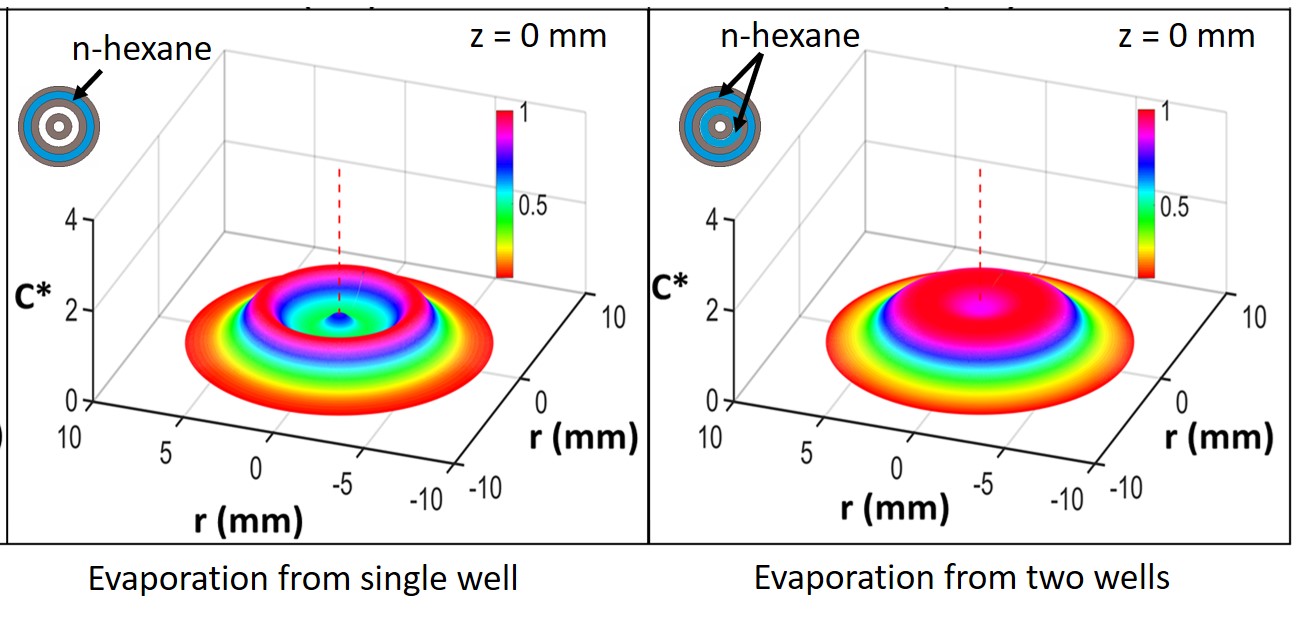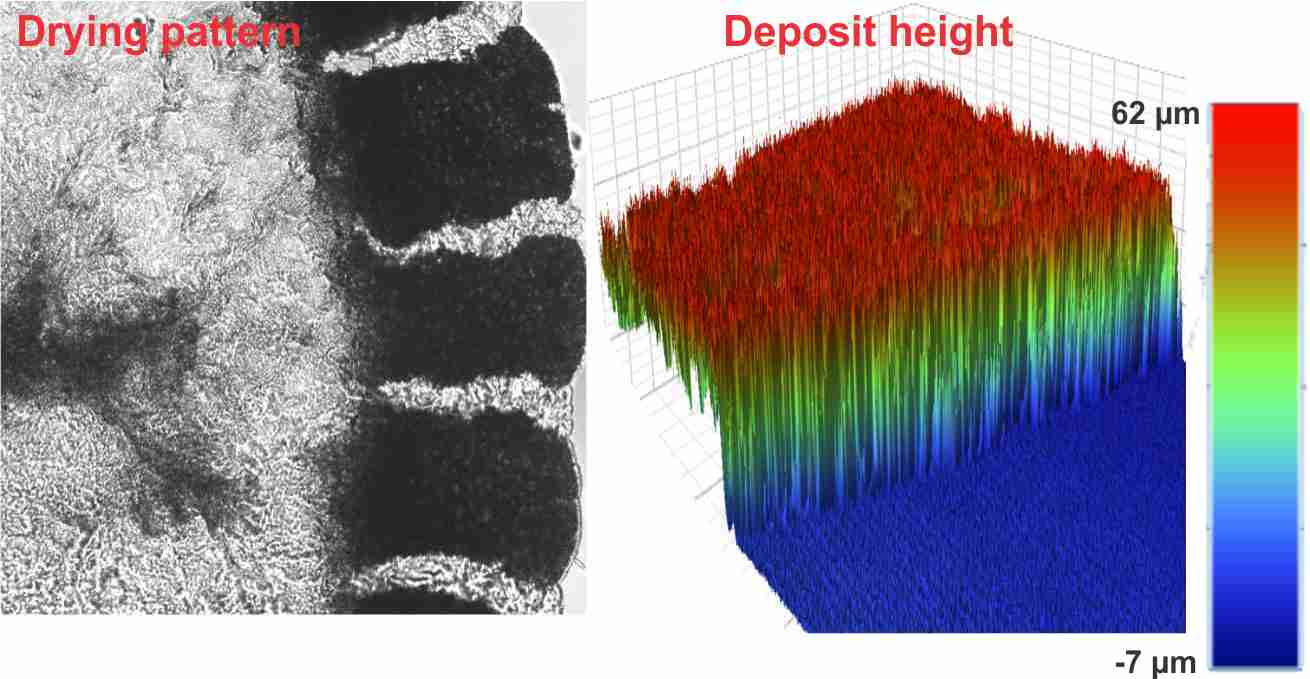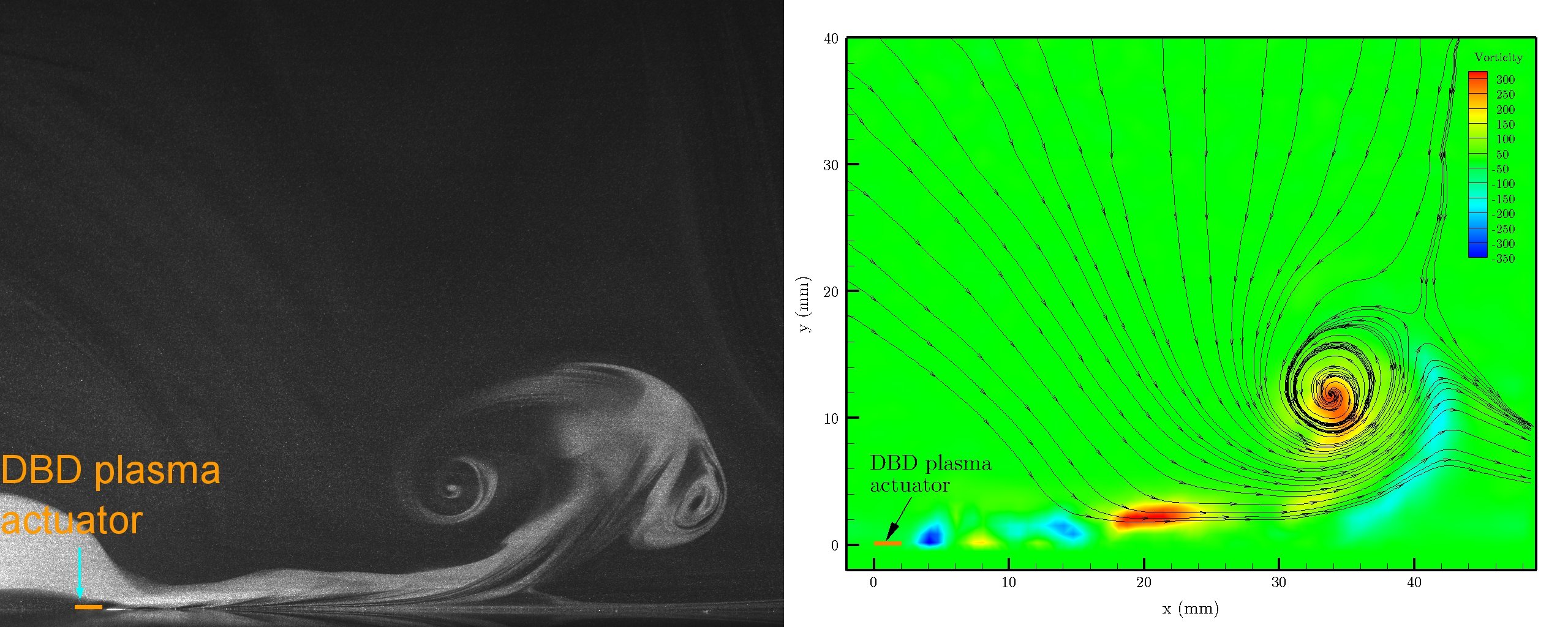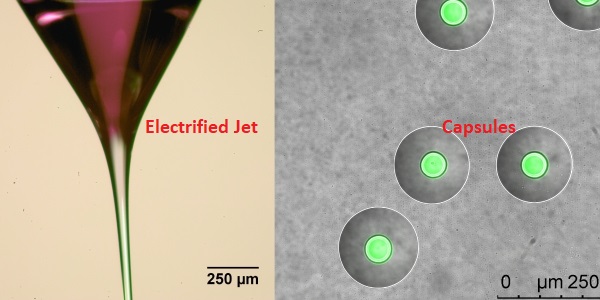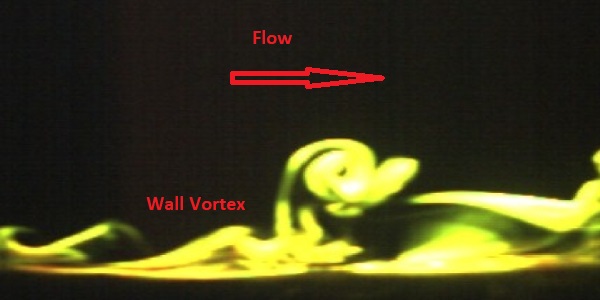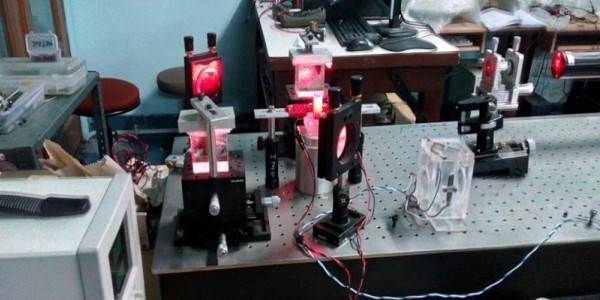| Research | Dr. Pradipta Kumar Panigrahi Professor, Mechanical Engg. Dept., Indian Institute of Technology Kanpur, Kanpur |

|
| Ongoing Activities | |
| Battery thermal management system The present study reports development and performance study of a ‘hybrid’ thermal management system (TMS) using phase change material (PCM) and ionic wind. The battery is surrounded by PCM material and air flow around the battery packing is generated by ionic wind. The hybrid BTS shows 260% higher heat transfer coefficient than natural convectionInvestigation is also being carried out to use electrospray for thermal management system. Research Scholars: Rishav Kumar, Hari Har Reddy Ref. Rishav Kumar and Pradipta Kumar Panigrahi "A hybrid battery thermal management system using ionic wind and phase change material", Applied Energy, 122676. 359, (2024). |
|
Electrospray for high heat flux electronics cooling Electrospraying (ES) is a novel cooling technology in which a high electric potential is applied between a grounded electrode and capillary nozzle, which subsequently generates a strong electric field at the nozzle tip that transforms the spherical meniscus of the coolant liquid into a liquid cone. Different spraying modes can be obtained depending on the applied electric potential, coolant flow rate, surface tension, and electrical conductivity of coolant. ES cooling has emerged as a promising method for enhancing the heat transfer required in various applications like defence, aviation, space, and electronics. This technique is gaining popularity because of its minimal energy and space requirements, high thermal efficiency, low coolant consumption, and exceptional temperature control capabilities and is the focus of our work. Research Scholars: Atul Ranjan and Rishav Kumar Ref. Samarshi Chakraborty, Digvijay Shukla and Pradipta Kumar Panigrahi "A Review on Coolant Selection for Thermal Management of Electronics and Implementation of Multiple-criteria Decision-Making Approach", Applied Thermal Engineering, Vol. 245, 122807 (2024). |
|
Annular DBD plasma actuator-controlled wind turbine Wind turbine performance is often affected by flow separation on the turbine blades. The present investigation focuses on the effectiveness of annular DBD plasma actuators in improving the aerodynamic performance of wind turbine blades. This study examines the aerodynamic behavior of an annular plasma actuator-controlled wind turbine using Schlieren technique, TR-PIV, smoke flow visualization, and load cell measurements. Research Scholars: Thillaikumar T., Bal Krishan Mishra Ref. DBal Krishan Mishra, Archana Gupta, and P. K. Panigrahi "Near-wall characteristics of wall-normal jet generated by an annular DBD plasma actuator ", Physical Review Fluids, 7, 033702 (2022). |
|
Hydrate for Methane Gas Recovery & CO2 Capture We are undertaking several experimental and simulation studies on hydrate for (a) Storage and Transportation (b) Energy Resource Exploration, and (c) Environment. Our experimental study uses several optical techniques i.e. PIV and Schlieren for study of transport processes during formation and dissociation of hydrate. The simulation studies are carried out using in-house developed codes in Openfoam platform. Click here for Multimedia View Click here for More Info on Hydrate Lab Research Scholars: Ayaj, Randeep, Saurabh, RahulRef. Ayaj Ahamad Ansari, Randeep Ravesh, Samarshi Chakraborty, Pradipta Kumar Panigrahi and Malay Kumar Das "CO2 hydrate formation kinetics in the presence of layered double hydroxide nanofluid", Chemical Engineering Technology, Vol. 46, No. 8, 1630–1638 (2023). |
|
Recent Activities |
| Hydrodynamics of Evaporating Droplet and MicroWell Evaporating droplet and microwell have several practical applications like heat transfer, manufacturing processes, combustion, disease diagnosis etc. Evaporation from the droplet surface induces flow inside the droplet due to either surface tension driven Marangoni convection or buoyancy driven Rayleigh convection. We study the internal convection inside the droplet/well by using micro PIV technique. The vapor cloud outside the droplet/well is studied using holographic interferometry Research Scholars: Digvijay Shukla Ref. Digvijay Shukla, Pradipta Kumar Panigrahi "Digital Holographic Interferometry Investigation of Liquid Hydrocarbons Vapor Cloud Above a Circular Well" Applied Optics, Vol 59, No. 19, 5851 (2020). |
|
| Drying of droplets The deposited pattern on the substrate after drying of nanofluid droplet has a significant role in various industrial and biological applications such as inkjet printing, DNA/RNA microarrays, biomedical diagnosis, coating technology, and micro-nano fabrication. Nanofluid droplet evaporation is also important for design of high heat flux cooling system. We are investigating the droplet evaporation and pattern formation after drying the ferrofluid droplet. During evaporation the transport of nanoparticles towards the contact line depends on the evaporation dynamics and the related Marangoni stresses. The deposition pattern distribution has been measured by using the 3D Optical profilometer and the evaporation dynamics have been reported using micro-PIV measurements. Influence of Magnetic actuation on the control of the droplet evaporation process has also been investigated. . Research Scholar: Sunil Kumar Saroj Ref. S. K. Saroj and Pradipta Kumar Panigrahi "Magnetic suppression of the coffee ring effect",Journal of Magnetism and Magnetic Materials, Vol. 513, 167199 (2020). |
|
| DBD plasma actuator for flow control Vortical structures are induced by a dielectric barrier discharge (DBD) plasma actuator during burst mode actuation. These vortex structures have great potential for flow control related to drag reduction, separation control, jet vectoring, mixing enhancement etc. We are undertaking several activities on flow control of jets and channel flow using laser schlieren and high speed PIV Research Scholar: Bal Krishan Mishra Ref. Bal Krishna Mishra, Pradipta Kumar Panigrahi "Flow field induced by a dielectric barrier discharge plasma actuator analyzed with Bi-orthogonal decomposition", Physics of Fluids, Vol. 32, pp. 087112 (2020) |
|
| Electrohydrodynamic encapsulation Electrohydrodynamic Encapsulation is a technique for generating very small monodisperse capsules under the action of an electric field. Commonly used single or double emulsification technique reduces the bioactivity and causes denaturation due to induced mechanical force. Electrohydrodynamics encapsulation technique eliminates these limitations and enables encapsulation of many bioactive agents with high efficiency while preserving the bio-activity of core-shell geometry. Research Scholar: Archana Gupta Ref. Archana Gupta and Dr P. K. Panigrahi "Alternating current coaxial electrospray for micro-encapsulation", Experiments in Fluids, Vol. 61,29 (2020). |
|
| Synthetic jet for flow control The scope of the present study is characterization of synthetic jet and its applicatiojn for flow control i.e. drag reduction in under water vehicle. LDV and HWA techniques are used for characterization of near wall turbulence structures of an axisymmetric body. . Research Scholar: B.P. Maddilety Ref. Maddilety, B. P., Saha, A. K., and Panigrahi, P. K., "Study of Orifice Inclination Effect on Synthetic Jet Characteristics using Laser Doppler Velocimetry and Laser Induced Fluorescence", Proceeding of the 5th International and 41st National on Fluid Mechanics and Fluid Power, December 12-14, IIT Kanpur,Kanpur, India (2014). |
|
| Tunable Micro Dye Laser System Integration of MEMS technology with Fluidics and Optics known as Optofluidic offers many advantages in various applications from cost and performance point of view. The present research aims at development of dye lasers in a microfluidics platform and subsequent integration with complete lab-on-a-chip systems for biomedical application. The fabrication is primarily carried out using fS laser micro machining technology in glass/PDMS. The tuning will be carried out using magneto-fluidics principle. Research Scholar: Sanyogita Singh Ref. Sanyogita S., Das U, Panigrahi P. K. "Simulation studies for femtosecond laser inscribed Bragg grating structures on polymer", 3rd International Conference on Opto-Electronics and applied Optics, Optronix 2016. |
|
| Optofluidic lab on a chip sensor The scope of the present work is based on design, fabrication, and characterization of optofluidic sensor based on microchip components, such as Mach Zehnder interferometer , photo detectors, fluorescence filters, and microfluidic channels, and their integration into a polymer host platform (like PMMA) to form a compact optofluidic sensor with improved performance. Research Scholar: Amar Ghar |
|




